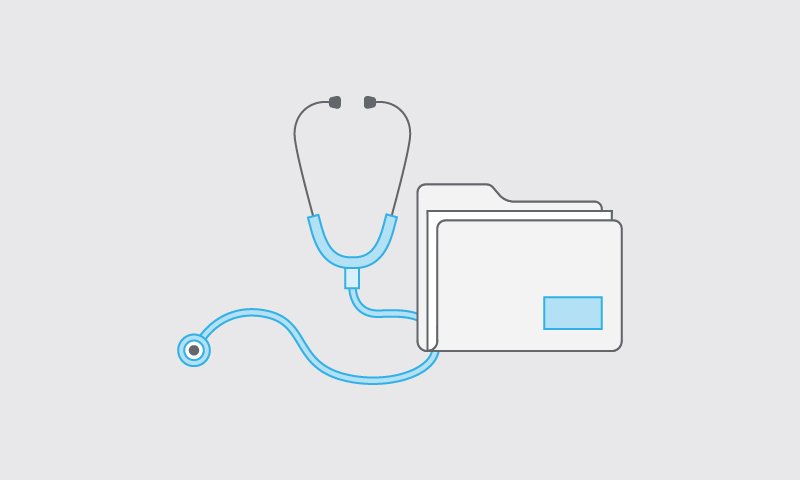31 March 2022
Providing insights for system wide planning: experiences of discharge to assess
Timely and appropriate discharge of patients from hospital to home has long been recognised in health and care policy and practice, but has seen more focus through the coronavirus pandemic. Our work on evaluating the impact of discharge to assess (D2A), and also our wider analytical work with individual health and care systems, has highlighted the importance of national guidance and funding for hospital discharge and community support in facilitating and accelerating discharge processes and Home First practices.
Our experience suggests that the health and care systems that have made more rapid progress over recent months were already well advanced in their D2A thinking prior to the pandemic, and prior to the release of new guidance.
All systems will find that, in order to maintain progress when the national hospital discharge funding comes to an end on 31st March 2022, they will need to understand their local case for investment based on longer term transformational change and capacity building. This should not only be about moving people through hospital as quickly as possible, but also the ability of a genuine and properly commissioned D2A service that delivers the right outcomes by allocating people to appropriate discharge pathways with the right support before an assessment of their long-term needs.
Our work with systems has uncovered key principles and practices, with lessons highlighted for:
- policy;
- commissioning;
- leadership;
- workforce;
- communications;
- pathway definitions; and
- metrics;
A number of insights from more in-depth work with three of the evaluation systems have been captured in the resource Effective Commissioning for a Home First Approach* - those that seem to be particularly important in enabling better practice to develop have included:
- developing strong strategic leadership and governance, building the relationships needed to establish successful strategic partnership approaches
- enabling new models of care to ensure discharge on the right Pathway, supported by the joint planning and commissioning of sufficient and flexible community and Intermediate Care services
- removing assessment from inside the hospital, and ensuring it follows a period of recovery and support
- ensuring VCSE support is in place to supporting D2A in Pathways 0 and 1, and that skilled therapy inputs are in place particularly to pathway 2 to ensure a focus on recovery
A key enabler for these aspects of better practice is access to timely and transparent data and to access the insights needed to develop a common understanding across the system.
Good planning requires good data
A system-wide approach is essential for D2A to work well across organisations, yet data processes across and within organisations often do not collect comprehensive information about pathways, and the tracking of outcome measures for patients are at an early stage of development. One thing that we have heard repeated in all of our work is the importance of a ‘single version of the truth’. This ‘truth’ involves the monitoring of pathways out of hospital and the outcomes achieved for patients, and the collection of data and metrics that allow for a clear system understanding of demand and capacity, particularly of Intermediate Care.
Although we have seen a number of systems making good progress in this area, considerable barriers exist. Recording is across a huge number of different systems and often inconsistent between areas, organisations and care settings - with particular challenges for community data. This leads to a fragmented data landscape. The absence of good, linked data reduces the ability to track individuals’ outcomes through acute, intermediate care and social care. This makes it difficult to review a D2A model against intended services and use this insight to shape services.
The more advanced examples we have seen have progressed with regularly updated dashboard and system metrics, allowing for an understanding of flow through pathways, waiting times, current capacity and length of pathways. This capture allows an understanding of any gaps in provision. Forward modelling of these demands on intermediate care services (particularly therapists), helps to inform decisions on what to change – ideally this measures the demands on each care pathway in order to plan capacity to ensure timely discharge and track longer term outcomes to understand how they support recovery over time.
National progress towards joined up data
Fragmentation of data is a well-recognised issue across the health and care sector. It has been encouraging to see a focus on integration of health and social care data in the ‘data saves lives’ draft data strategy and the ‘joining up care for people, places and populations’ White Paper – which together set out how to make progress on a number of key enablers that if successfully delivered could help address barriers across workforce, data and financial alignment. This recognises that the transparency of workforce, operational capacity and financial data across an ICS can also support better use of resources - using joined up data to help commissioners and providers to get a complete picture of the care being delivered, and support planning and service improvement. In our work as formative evaluators on the Health Foundation Networked Data Lab Programme**, we have seen first-hand how innovative linking of data at a local level, together with investment in infrastructure and analytical capability, can enable rapid (federated) analyses that provides insights to help address major challenges.
Broader adoption and progress to address data fragmentation will require the continued development of technical infrastructure and data standards, with a particular focus on out of hospital care.
Next steps for integrated care systems
As the Hospital Discharge funding comes to an end, the focus needs to be on commissioners and providers across the NHS and local government working together to align across budgets, whether pooled or not, based on fair and appropriate contributions to achieve shared outcomes - increasing investment in community services that build independence, underpinned by principles of alignment, integration and a system wide model.
The ability for NHS and local authority partners to come to an agreement requires data professionals and those leading, delivering and transforming health and care services to collaborate at a local level to develop a transparent understanding and the required intelligence to feed strategies. Having the data and capability to build a comprehensive understanding of discharge-related financial flows across the health and care system builds confidence of the system and develops trust between partners.
Our experience has also shown us that local expertise cannot be underestimated. Without a detailed understanding of the nuances associated with a particular ‘place’, it’s not possible to get to the full picture of how a system works on the ground, how data is captured, and how it can and should be analysed and interpreted.
Systems are at different starting points on their journey but if clarity and transparency across the breadth and depth discharge pathways can be developed, then systems have a chance of unlocking the power of data to develop more joined up approaches – this will bring local authority and NHS services much closer together to help tackle issues, and one step closer to the elusive ‘Single version of the truth’.
Our team
Our Health and Care Analytics team combine a unique blend of analytics, economics, research and evaluation to support health and care to provide evidence for change. We support all stages of planning and delivery to improve health and care outcomes, including evaluation, planning and strategy and at national, system and service level.
If you would like to speak to us then do get in touch with Steve Hodgson.
*RSM were commissioned in March 2021 by NHS England and NHS Improvement, working with IPC to evaluate the implementation of the Hospital Discharge Policy and Discharge to Assess (D2A) model, undertaking qualitative and quantitative research and analysis. Three of the health and social care systems in England involved in this work were selected to a deeper dive to understand what makes an effective model for Home First commissioning.
**RSM were commissioned in October 2021 by The Health Foundation working with the University of Southampton to undertake a formative evaluation of the Networked Data Lab (NDL) programme. The NDL is an initiative aiming to build a collaborative network of analytical teams across the UK, which use linked datasets to produce insights on critical areas of population health and health care.











